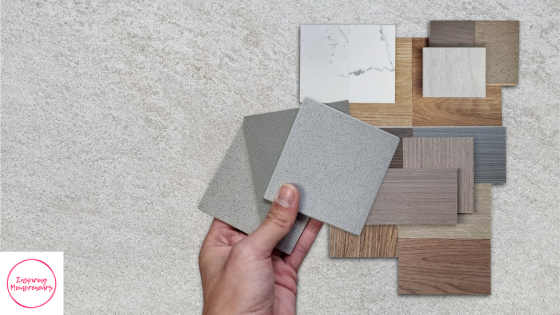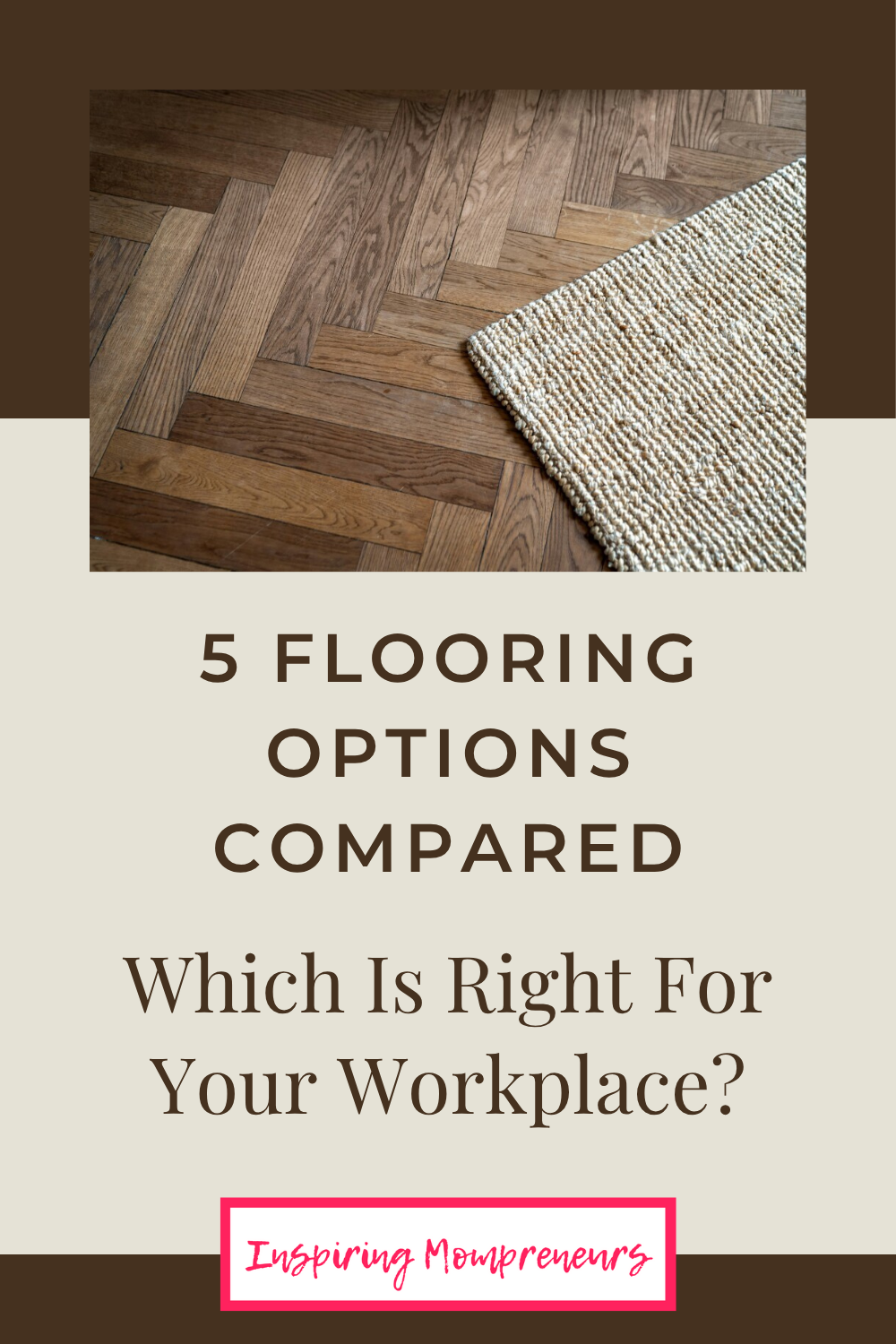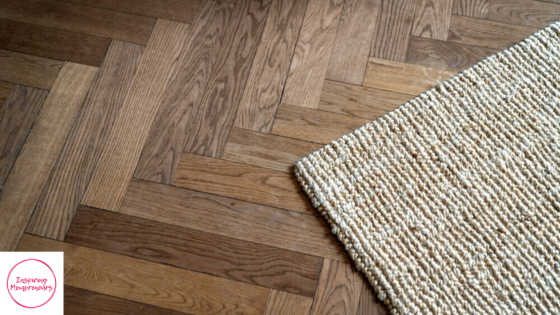The flooring material you choose for your workplace can have an impact on how it looks, how comfortable your workplace is, and how easy it is to maintain. In this post, we’ll compare 5 popular workplace flooring surface materials: vinyl, laminate, carpet, concrete, and rubber.
5 Flooring Options Compared: Which Is Right For Your Workplace?

1. Vinyl
Vinyl stands out for its versatility. It comes in all kinds of colors and textures for all different types of workplace. There are even luxury vinyl options that mimic high-end materials like hardwood and stone.
The biggest perk of vinyl is that it looks good, but doesn’t cost a lot. It’s also waterproof, offers good sound absorption and is easy to clean.
Just be wary that vinyl can tear easily and therefore may not be suitable for environments in which heavy machinery or equipment needs to be moved around.
2. Laminate
Laminate is a go-to for offices wanting to imitate the appearance of wood on a budget. This material consists of a fiberboard core with a decorative photographic image on top which is protected with a layer of melamine.
Spillages can often be easily cleaned off of laminate, however it should be avoided in areas exposed to a lot of moisture.
Downsides of laminate are that it can get cold in winter and can be noisy in high traffic areas. Placing down rugs can help to combat this.
 3. Carpet
3. Carpet
Carpet offers the best insulation and noise reduction of any flooring material. It also offers a lot of cushioning, making it a good choice for workplaces where people are on their feet for long periods.
The disadvantage of carpet? It needs to be cleaned regularly to prevent it from collecting odors and dust, plus it can be easily damaged by spillages or heavy furniture.
Many workplaces end up choosing carpet tiles to extend the life of this flooring – you can then individually replace any damaged tiles instead of having to replace the whole carpet.
4. Concrete
Concrete is the best choice in many industrial settings, providing a durable and hard surface that can handle heavy loads without breaking. It is possible for concrete to crack, but in many cases concrete repair can be carried out easily and cheaply.
Polished concrete is typically favored over raw concrete as it looks nicer and is easier to clean.
The biggest drawbacks of this material are that it gets cold easily, can be noisy underfoot and can cause injuries if people fall on it. Mats and rugs are sometimes used on top of it to make walkways more comfortable.
5. Rubber
Rubber is commonly used in gyms and high-impact environments. It’s shock absorbent, helping to reduce fatigue of standing workers. It’s also easy to clean and slip resistant, making it suitable for environments that may have spillages like commercial kitchens and workshops.
Most workplaces nowadays use synthetic rubber as opposed to natural rubber, because it’s cheaper and more durable. While a practical solution for many workplaces, it lacks the aesthetics for formal environments like offices and hotels, and its synthetic odor may be distracting.
Related: 5 Dangers of Workplace Dust


